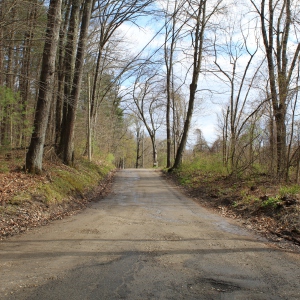Larkin Pazanova: A spotting of the spotted lanternfly

A spotted lanternfly struggles to move on the ground in Steelton, Pa., on Sept. 12, 2024. AP FILE PHOTO/MATT ROURKE
| Published: 07-15-2025 10:15 AM |
This Sunday in Amherst, I saw my first spotted lanternfly. I wanted to share this news, because we can rally to protect our beloved ecosystem. Here are some ways I’ve found helpful to stay active about ecosystem protection: learn identifications. When you see a lanternfly, or another dangerous species, act as the planet’s immune system. Strengthen our bat population with those boxes. In other parts of the state, there are reports that bats are eating spotted lanternflies! The leading resource on the construction and maintenance of safe, healthy bat boxes is merlintuttle.org.
Report the finding. Tracking the movement of ecologically dangerous species helps the community know where to focus our actions. Apps like iNaturalist can help with plant and species identification, and large scale data collection. Learn about the problems presented by endangered species. We still have so much to learn about these aggressively overpopulating plants and animals. The essential issue I’ve gleaned, from the Sewing Solutions Permaculture Design Course in Shelburne Falls and a lecture presented by Heidi Dollard at the Kestrel Land Trust, is that these species crowd out our native ones, who are already weakened by climate change. The native species are inter-reliant: native pollinators only gather pollen from native species, and deer only eat native plants, so they really need space and resources.
Look where you want to go. We have the capacity to be the world’s greatest caregivers. Let’s cultivate that future.
Larkin Pazanova
Amherst
Yesterday's Most Read Articles
 ‘We’re trying a new adventure’: International Cafe and Deli opens in South Deerfield
‘We’re trying a new adventure’: International Cafe and Deli opens in South Deerfield
 My Turn: A rocky road ahead for Stone Farm Lane proposal
My Turn: A rocky road ahead for Stone Farm Lane proposal
 Slew of write-ins elected in Hawley
Slew of write-ins elected in Hawley
 Baseball Roundup: Greenfield’s Caleb Thomas holds Franklin Tech to two hits as Wave advances to Class C semis with 11-1 win
Baseball Roundup: Greenfield’s Caleb Thomas holds Franklin Tech to two hits as Wave advances to Class C semis with 11-1 win
 Gov’s supplemental budget includes $7M for unpaved roads
Gov’s supplemental budget includes $7M for unpaved roads
 22-year-old farmworker airlifted to hospital after tractor accident in Sunderland
22-year-old farmworker airlifted to hospital after tractor accident in Sunderland






 My Turn: There is something we can do: Emergency campaign launched for children of Gaza
My Turn: There is something we can do: Emergency campaign launched for children of Gaza Columnist Daniel Cantor Yalowitz: Searching for solitude, safety and peace in a world gone crazy
Columnist Daniel Cantor Yalowitz: Searching for solitude, safety and peace in a world gone crazy My Turn: Spectre of public and affordable as scare tactics
My Turn: Spectre of public and affordable as scare tactics
